This post about European pear varieties is the first in a series that will be highlighting the diverse and interesting plants at POP’s HQ, the Learning Orchard at The Woodlands. We are excited to share about the 7 different European pear varieties currently growing there, some of which have very interesting histories and local heirloom origins. Each have their own unique features regarding yield, taste, texture, pollinator preferences, and pest resistance. Let’s begin the pear cultivar journey!
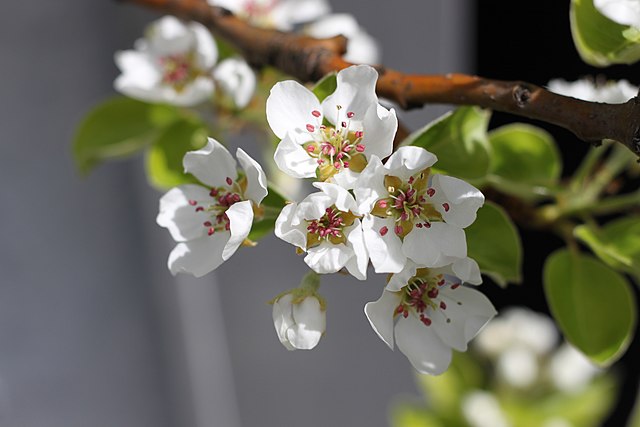
Source: Wikimedia Commons
WHAT IS A CULTIVAR?
A cultivar, short for cultivated varieties, is a plant variety with special traits that has been produced in cultivation by selective breeding.
What is the difference between a cultivar and variety? People often use the names interchangeably, but they are technically different. A cultivar is a plant that is produced and maintained by humans but does not produce true-to-seed. A variety is a group of plants within a species that has distinguishing features that may originate with or without human-led selective breeding. Varieties also typically produce true-to-seed. This means that the seedlings grown from a variety will be mostly identical to the parent plant, sharing the same traits.
An easy way to tell the difference between a cultivar and variety is in their nomenclature (the plant naming system). Cultivar names are the species scientific name in italics followed by the cultivar name, which is unitalicized, set off in single quotation marks, and the first letter of each word is capitalized. Plant varieties are named in this fashion: species scientific name in italics followed by the abbreviation “var.” followed by the variety name all lowercase and italicized.
CULTIVAR PROPAGATION
Cultivars are typically propagated vegetatively rather than from seeds. The primary reason for this is that growing a tree from seed will also result in a plant that turns out different from the parent plant, with different characteristics and quality of fruit. Vegetative propagation, most commonly via grafting, avoids this problem by producing an identical plant from the parent plant.
Cultivars are typically the result of a cross between parents of the same species but different varieties. People choose cultivars because they are often looking for specific traits in a plant. An example would be choosing a cultivar with high pest resistance and medium fruit yield over a cultivar with low pest resistance but high fruit yield. Depending on the species, it is often necessary to have two or more different cultivars to ensure cross pollination.
CULTIVARS AT THE POP LEARNING ORCHARD AT THE WOODLANDS
POP currently has 7 European pear cultivars at the Learning Orchard:
-Lady Petre
-Seckel
-Tyson
-Sunrise
-Harrow Sweet
-Potomac
-Shipova
Diversifying the cultivar pool creates more variety in the fruit yield, flavor, and pest resistance. It also allows for better cross pollination, since pollinator partners typically need to be the same species but different variety. This is why all of our pear varieties are planted in the same row to facilitate better cross pollination. One shared feature among all of these varieties is their resistance to fire blight, a destructive and highly pervasive bacterial disease that can severely damage and/or ultimately kill pear trees.
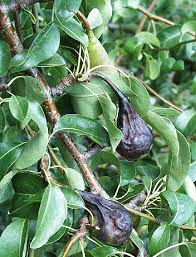
Tree Finder
POP now has an interactive map on our website showing all the trees, shrubs, and brambles growing at the Learning Orchard. You can scroll through and find the specific pear varieties if interested in learning more. All of our pears are in the same row intermixed with nitrogen fixing shrubs and herbaceous plants.
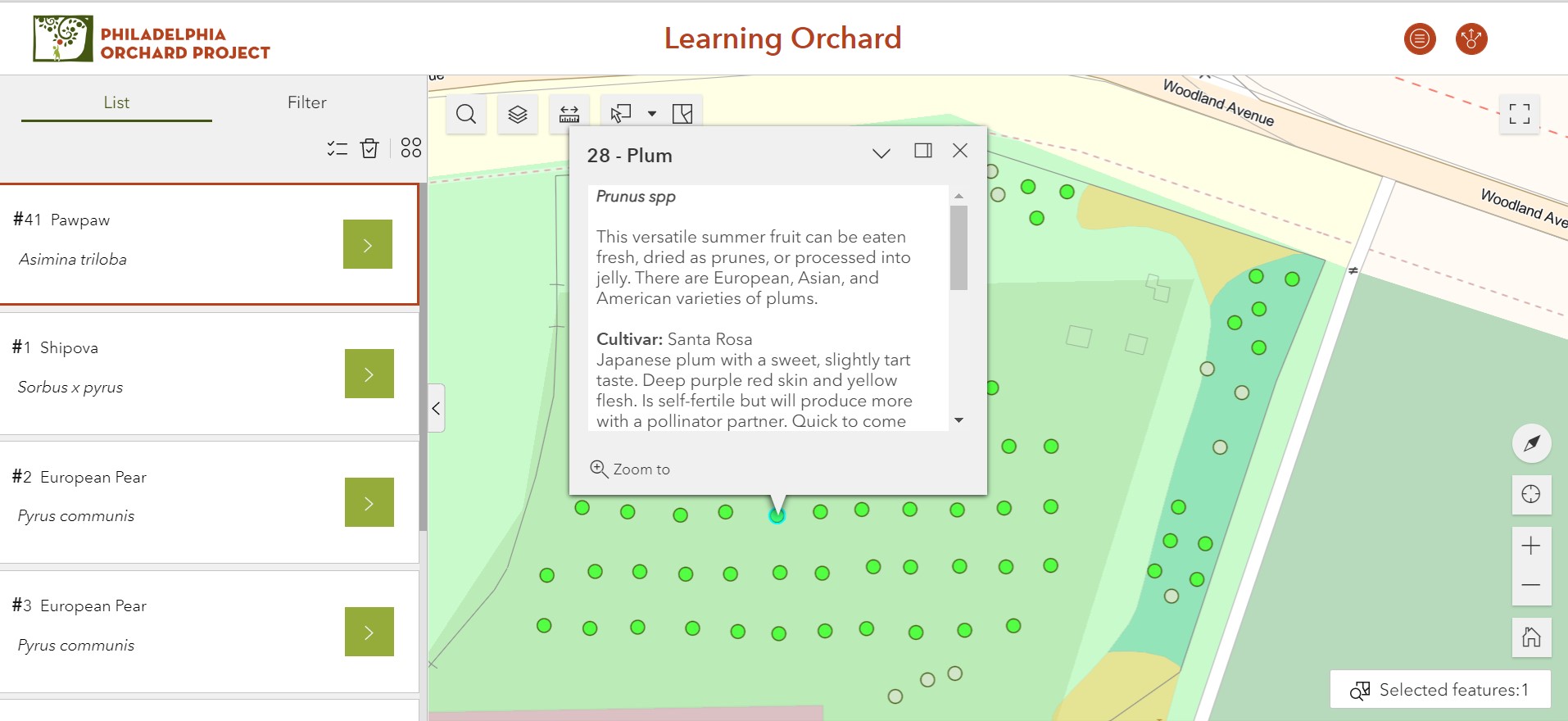
Source: POP
INFO ON PEAR CULTIVARS AT THE WOODLANDS:
LADY PETRE
Origin
This variety is supposedly the first pear variety originating in the U.S. It was cultivated by John Bartram, the Philadelphia botanist, himself. He received the seed from England’s Lady Petre in 1735. Named after her, it was his favorite variety. It took 20 years before it produced any fruit, which is common when growing pears from seed. The original tree lived for over 180 years at Bartram’s Garden. In 2010, POP staff located another grafted ‘Lady Petre’ pear tree in a Germantown backyard and took cuttings for propagation. The cultivar is not otherwise known anywhere in the world and is thus unique to Philadelphia!
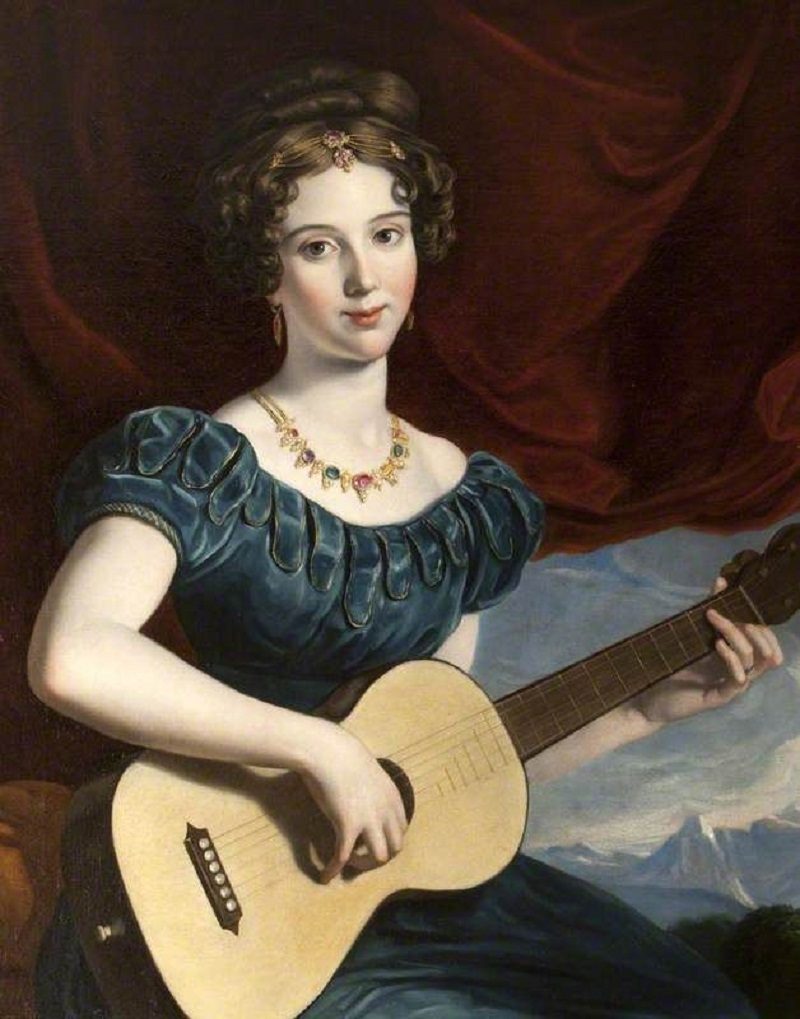
Resistance
It is fireblight resistant. It is also a very tough tree that has the capacity for high abundance in its yield and old age in its years.
Fruit
Mr. Bartram described the fruit in this way: “the Pear raised from her (Lady Petre’s) seed hath borne a number of the finest relished fruit. I think a better is not in the world.” The fruit has a white, soft, sweet, juicy interior with a delicious yet slight musky flavor. It fruits in September and can continue fruiting until December. It is a very vigorous producer of fruit and ripens off the tree.
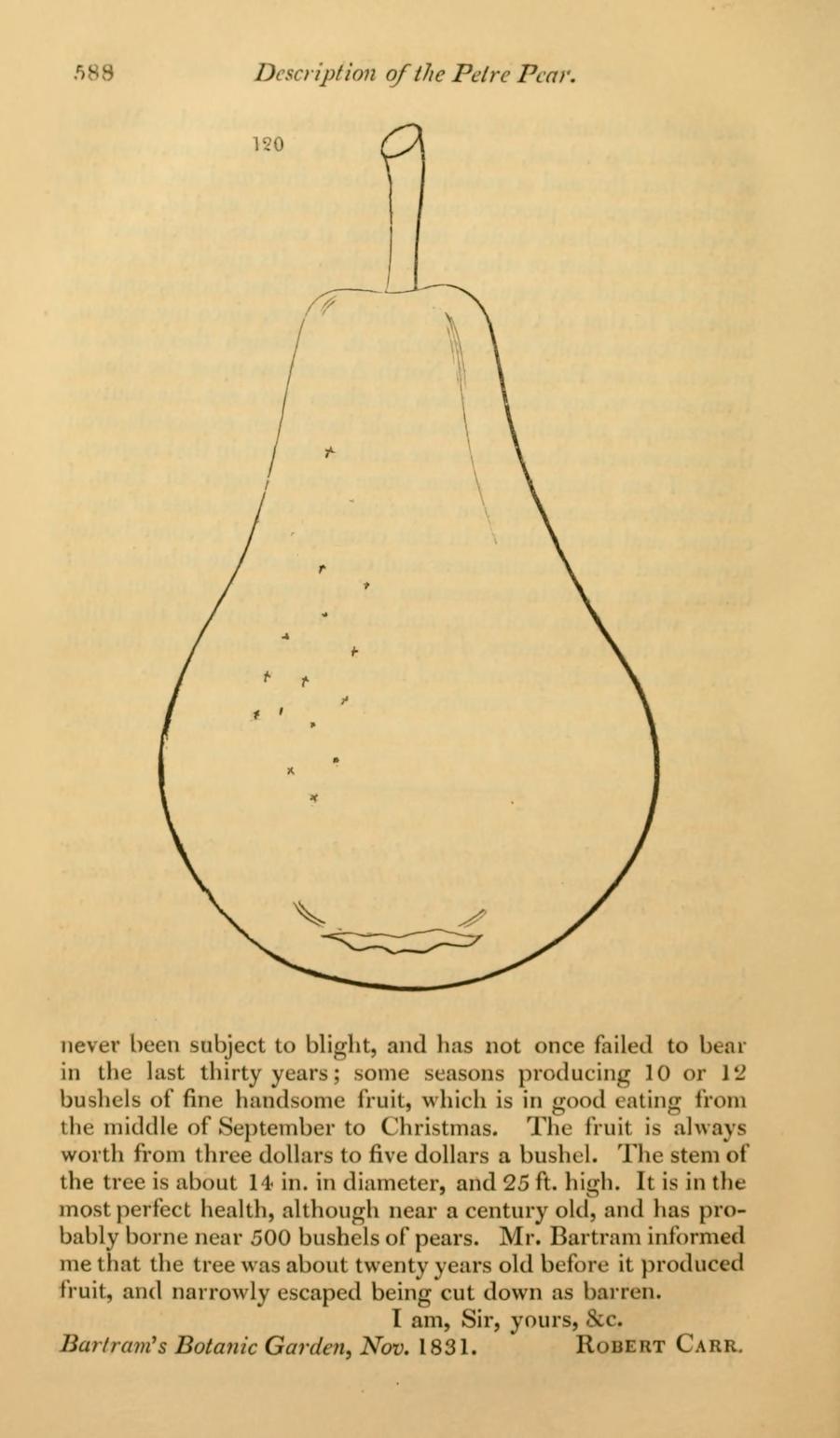
SECKEL
Origin
Seckel are believed to be the only true American variety of pear commonly grown commercially. The tree was originally discovered in the early 1800’s as a wild seedling growing on a farm in what is now FDR Park in South Philadelphia. Now grown around the world, this Philadelphia original is known for its small, sweet fruit.
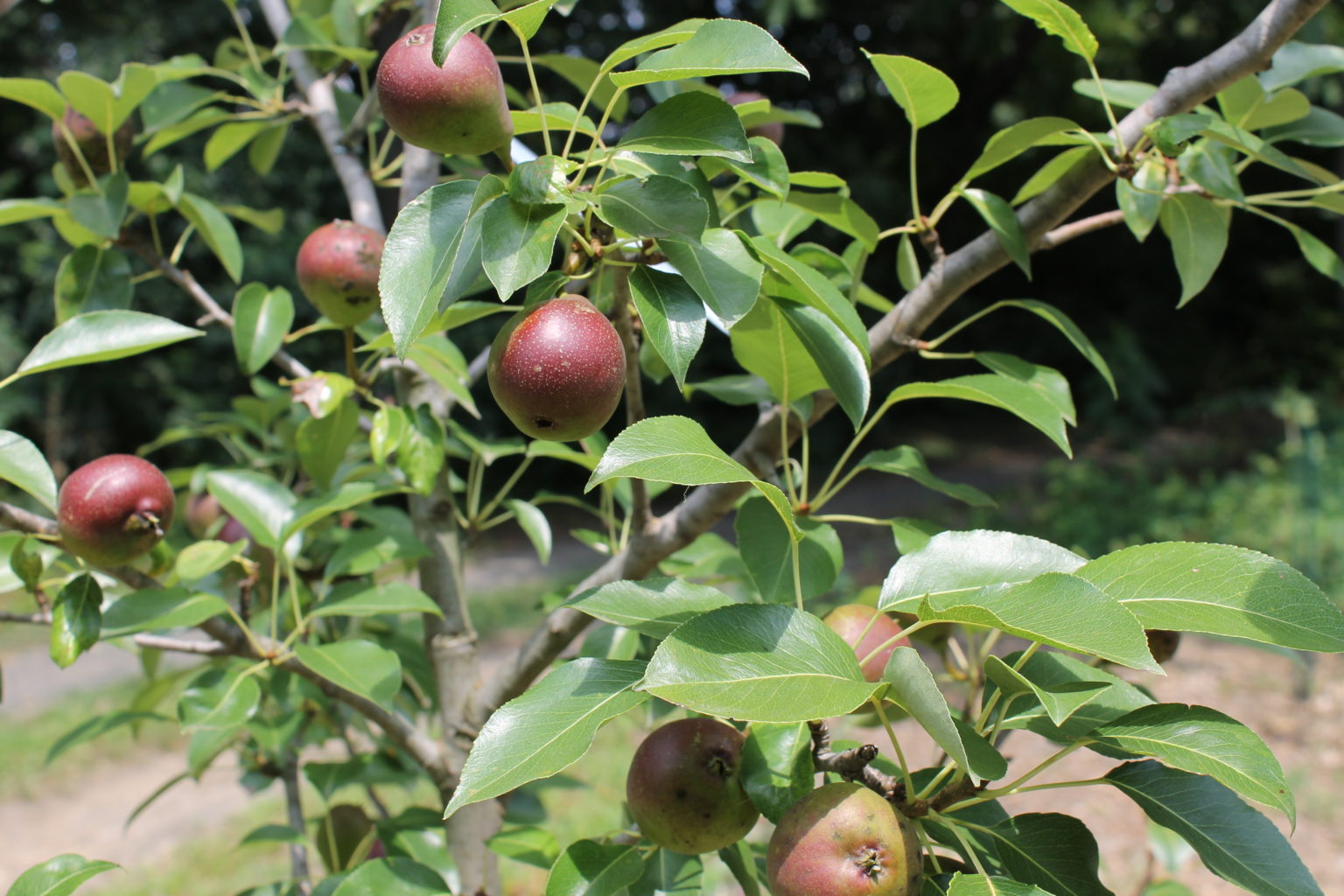
Resistance
It is resistant to fire blight. The tree is small compared to other pear trees.
Fruit
The fruit is small and round with a short neck. It is typically an olive green with a dark maroon blush that can cover the whole pear. It fruits in September and unlike most other European pears, ripens on the tree. They are super sweet with a hint of spice. Often enjoyed in cooked foods. Requires a pollinator partner.
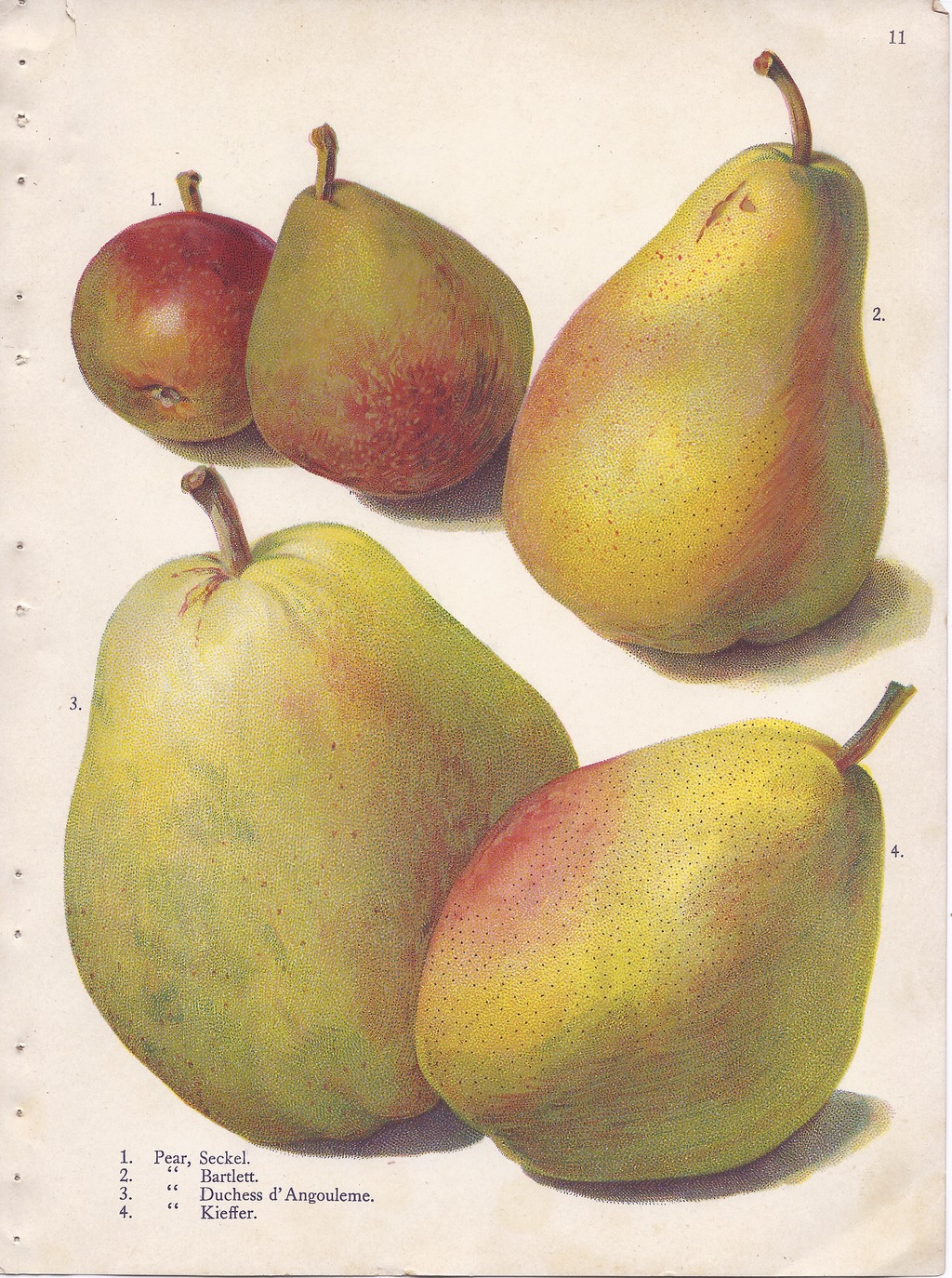
TYSON
Origin
Tyson originates from Jenkintown, Pennsylvania in 1794. Local tales say that Jonathan Tyson discovered it in a hedgerow on his farm near Jenkintown. It is a rather rare cultivar so it’s a special one to have in the orchard.
Resistance
It is resistant to fire-blight. It is a highly-productive tree and has good pest resistance.
Fruit
This is an early fruiting variety, often called a “summer seckel”, that is ready for harvest in late August. The fruit is yellow with no blush and is medium in size. It has a very sweet flavor with a hint of spice. It has a non-gritty, juicy texture. It ripens off the tree.
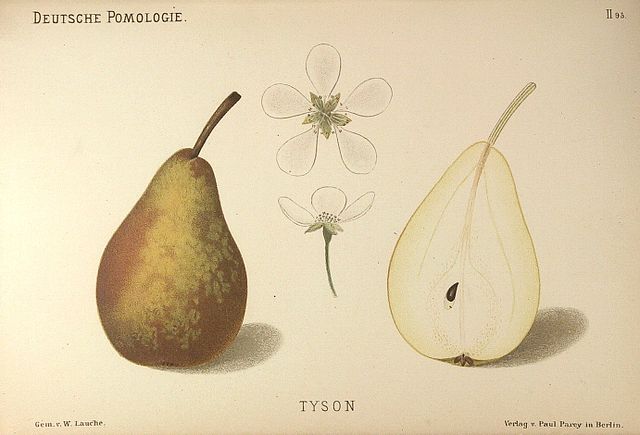
SUNRISE
Origin
Sunrise was developed from a collaboration between Oregon State and USDA: ‘Seckel’ is one of its parents and it has some Asian pear parentage as well as European.
Traits
Sunrise is a newer pear cultivar prized for its early harvest and high fruit quality. Oh, and its resistance to fire blight and pear scab is a relief for all orchardists.
Fruit
The fruit is ready for harvest in August, earlier compared to other pears. The fruit at harvest is a glossy light green with a subtle pink or red blushing. The skin turns yellow when fully ripe. Like all European pears, it ripens off the tree. The fruit can keep for up to 2 months in the fridge. It has a strong sweet flavor to it. To ensure fruiting, plant another pear (Bartlett variety is an ideal pollinator partner).
HARROW SWEET
Origin
Harrow Sweet is a late-season European pear that was produced at the Agriculture and Agri-Food Canada research station in 1996 in Canada. It is a cross between a Bartlett and Purdue.
Resistance
This tree is fireblight resistant. Additionally, it is resistant to mildew, but somewhat suceptible to scab.
Fruit
It produces an abundant crop later in the season around September. The pear is yellow with an orange blush. The flesh is sweet and juicy, similar in flavor to a Bartlett. It will store well for about two months, and it holds its form when processed. It tends to over-fruit, producing small flavorless fruit, so it is important to thin the fruit in the late spring. It is not self-fertile so requires another compatible European pear nearby (surprisingly it can cross pollinate with the Bartlett).
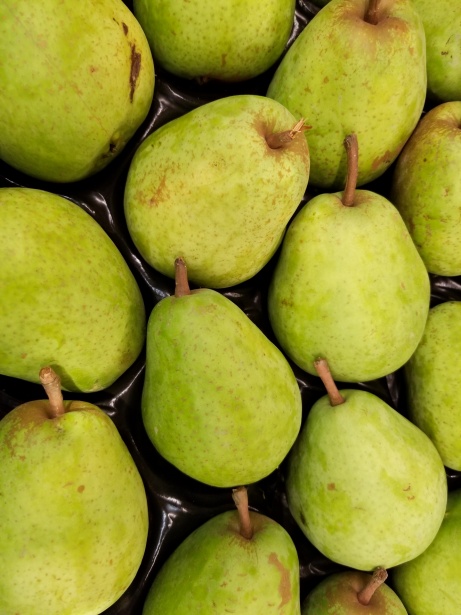
POTOMAC
Origin
The Potomoc is a cross between Moonglow, a modern disease resistant variety, and Anjou, a traditional French variety, and was introduced in the 1990s in West Virginia.
Resistance
Similar to Sunrise and Harrow Sweet, Potomac has some of the highest-quality resistance to fire blight.
Fruit
The fruit ripens in mid-September. The skin is glossy green and looks like an Anjou. The sweetness is balanced with a subtle acid tang. Potomac pears will store for up to 2 months. It needs a pollinator partner, but avoid Seckel as they are not compatible.
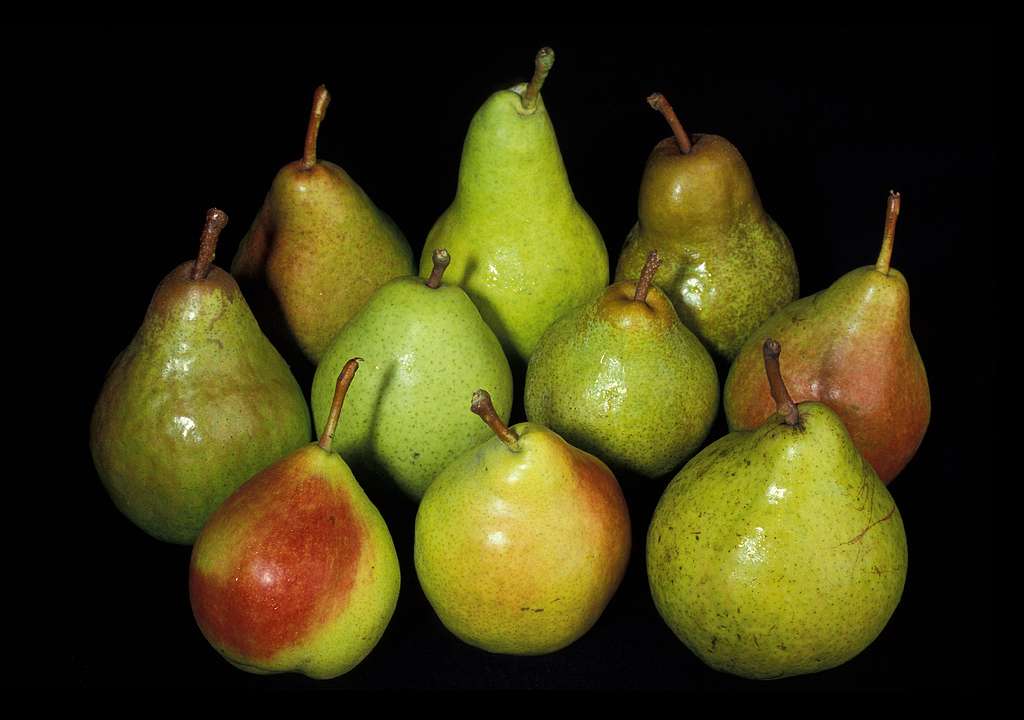
SHIPOVA
Origin
Shipova is an antiquated cross between a mountain ash and European pear. Mountain ashes readily hybridize with apples, medlar, aronia, hawthorns, and pears, which explains this interesting cross. Originally from France, it arrived in the United States in the 1950s. A tree with an open, pyramidal form and elegant silver grey leaves, Shipova offer ornamental value as well.
Resistance
Shipova is a scab-resistant tree.
Fruit
Shipova produces medium-sized, yellow, round fruit in August. The fruit is the size of an apricot and has the crisp texture of an asian pear with a tropical flavor. When fully ripe, the fruit has hints of mango and marzipan to it. Shipova can take up to 10 years to fruit, significantly longer than most apples and pears. The tree is self-fertile but produces more fruit when planted near other pears or mountain ash.
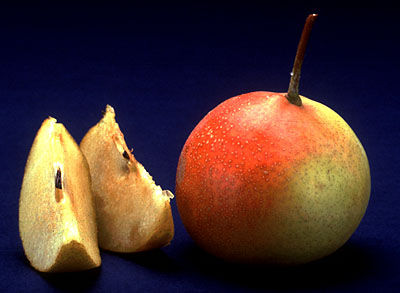
SOURCES
Lady Petre Pear: https://leereich.com/2016/04/historic-pear-and-nutty-pine.html
Book on Lady Petre Pear: The Gardener’s Magazine and Register of Rural & Domestic Improvement 1832 v. 8, p. 587
Seckel Pear: https://www.phillyorchards.org/2022/02/08/plant-of-the-month-seckel-philadelphias-pear/
Sunrise Pear: https://www.starkbros.com/products/fruit-trees/pear-trees/sunrise-pear
Potomoc Pear: https://www.cumminsnursery.com/buy-trees/product-detail.php?type=tree&id=2373
Harrow Sweet Pear: https://www.gardenia.net/plant/pyrus-communis-harrow-sweet
Tyson Pear: https://www.starkbros.com/products/fruit-trees/pear-trees/tyson-antique-pear
Fire Blight: https://www.phillyorchards.org/2015/06/22/preventing-and-treating-fire-blight/
Shipova: https://www.treepeony.com/products/shipova-ancient-pear-hybrid
This POP Blog was written by Orchard Assistant Simone Shemshedini with help from Co-Executive Director Phil Forsyth.
SUPPORT US! If you found this entry useful, informative, or inspiring, please consider a donation of any size to help POP in planting and supporting community orchards in Philadelphia: phillyorchards.org/donate